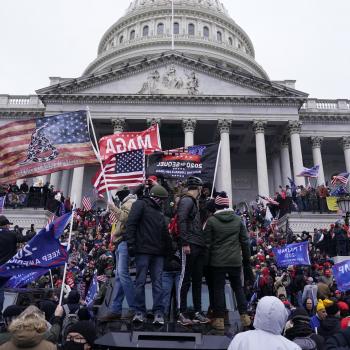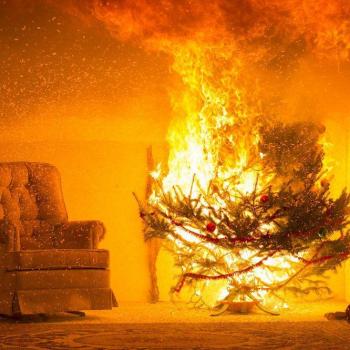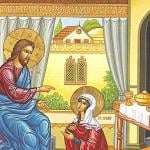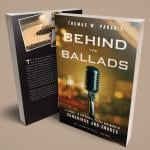The insistence on a literal, physical, bodily resurrection is killing the conservative Church.
The denial of a literal, physical, bodily resurrection is killing the progressive Church. 
Yeah, it’s a pickle.
The Bible says Jesus died, rose again, and ascended to heaven. All tensions within the Body of Christ can be reduced to this one question: Did he or didn’t he?
That may not be the only question that divides people of faith. But most bones of biblical and ideological contention stem from what we believe did, or did not, happen in that cave between Friday and Sunday.
Among fundamentalists, this is not even a question. Utter it aloud, and you will be told, swiftly and with certainty, that you are not a real Christian. You can just pack your bags right now. Bring along some tank tops because, y’know, it can get kind of warmish where you’re going.
Churches lose people, right there. When folks aren’t allowed to question the physical resurrection, they soon realize that “faith” means checking their brain at the door. Feeling that their brain is really kind of important (and possibly a gift from God?) they decide there is no room for them in that community, and they’re out. The exile of intellect is killing those churches.
Sometimes, sadly, the exiled reject all the other tenets of belief as well. They don’t seek another community, assuming that their heretical questions and blasphemous doubts will get them kicked out of the next place, too. But on occasion, those blessed doubters make their way into a progressive community. Their questions are affirmed. Their doubt is welcome at the table. The sun shines and women are allowed to say things and cartoon birds sing with the choir. It’s magical and transformative and together we shall save the world.
I’m not making fun. I love that church. I AM that church. Part of my job is scheduling the cartoon birds for Sunday mornings (they are on rotation with the choir, the large band, and the small ensemble). But here’s my concern: progressive communities are great at articulating what they don’t believe. Embracing doubt can be life-giving—even redemptive—for those who’ve been harmed by an oppressive environment. Most folks in moderate-to-progressive settings, whatever we may or may not believe about the “Event” itself, are comfortable saying that the whole of our faith does not hinge on that on belief in that one thing.
But the world is hungry for resurrection. Real, fleshy, tangible resurrection. And if we, in our healthy skepticism, omit or explain it away, then we’ve lost who we are, and who we are called to be for the world. If we are going to say “a literal, physical resurrection is not the center of our faith,” then we have to be able to answer the following questions:
-Then what is? And why are we here?
I don’t claim to have THE answer. But I do have at least one—the central claim of our faith is still resurrection—as we witness it in the world around. And ‘why we’re here’ is to share that witness in community, and embody it for humankind.
However it happened, whatever went down in that cave—it was God’s intent to enact grace on the world, and it is still our sacred calling to take part in that restorative work. From the shapeless void, God called out light and water and green stuff and breathing things; and out of the nothingness of a cave, God called forth life, again. For us.
That is the truth as I know it. I try not to get lost in the details.
We witness resurrection every day. You see it in restored families—and those that change shape but still work to love each other as best they can. You see it in women who’ve been empowered with voice, after generations of servitude; you see it when the Church welcomes the formerly exiled as full members of the body; you see it when you nurture the fragile earth, or work to end to violence; you embody it when you seek justice for poor and mercy for prisoner.
Learning how to name, claim and embody resurrection is a lifetime journey. In fact, it might be THE lifetime journey. But a big part of understanding it is the spiritual practice of saying:
“There’s a lot that we don’t know…”
When we acknowledge that nobody knows, we create the emptiness of the cave—the nothing space in which God can do miracles. At work in the holy darkness of unknowing, there is life.
There’s a lot that we don’t know… but we know for sure that some people came to a cave one morning, expecting to find their friend’s battered frame. And instead they said:
He is not here…
Because already, even then, he was ‘out there,’ in the world. Living and breathing in everyone who loves, seeks and serves… In every turning season, every gathered community, every head bowed in prayer for the hurting world. That’s why we’re still here. That’s what still matters.
He is not here. Maybe it’s not as complicated as a dead body walking around again, or floating up to a heaven we cannot see… But at the same time, it cannot be as simple as misplaced remains, or narrative metaphor, or Roman conspiracy.
He is not here. He is going before us, and at work within us.
That is resurrection. Some historian/theologian/anthropology/science team could come up and say, “look, we have proof. This dead-then-alive thing absolutely didn’t happen.” But it would not change who he is for us, or who we are in him.
That same team of folks could say, “Listen. It’s real. We caught every moment, every word, every image on film. It absolutely, positively happened, just as we’ve been told.”
And you know what? We might not be so surprised.












